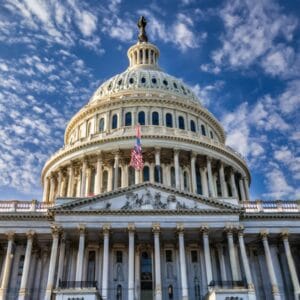The current members of the United States Congress are as follows:
- The United States Congress has two chambers: the Senate and the House of Representatives.
- The Senate has 100 members, two from each state, who serve staggered six-year terms. As of March 2, 2025, there are 47 Democrats (including 2 Independents who caucus with them) and 51 Republicans in the Senate.
- The House of Representatives has 435 members, who represent congressional districts based on population and serve two-year terms. As of March 2, 2025, there are 218 Republicans and 213 Democrats in the House, with 4 vacancies.

The current leaders of Congress are the elected officials who hold the highest positions of authority and influence in the United States legislative branch.
They are responsible for setting the agenda, managing the legislative process, and representing their parties and constituencies in the Congress.
As of March 2, 2025, the current leaders of the Congress are:
- Speaker of the House: Mike Johnson (R-LA-04). He is the presiding officer of the House of Representatives and the second in line of succession to the presidency after the vice president. He was elected as the Speaker on January 3, 2023, after leading the Republican Party to regain the majority in the House in the 2022 midterm elections.
- House Majority Leader: Steve Scalise (R-LA-01). He is the second-ranking leader of the House Republicans and the floor leader of the majority party. He is responsible for scheduling legislation, coordinating committee activities, and building coalitions among party members. He was re-elected as the House Majority Leader on November 17, 2022.
- House Minority Leader: Hakeem Jeffries (D-NY-08). He is the leader of the House Democrats and the floor leader of the minority party. He is responsible for developing the party’s legislative agenda, communicating the party’s message, and leading the opposition to the majority party’s initiatives. He was elected as the House Minority Leader on November 18, 2022, succeeding Nancy Pelosi who retired after serving as the Speaker for four terms.
- Senate Minority Leader: Chuck Schumer (D-NY). He is the leader of the Senate Democrats and the chief spokesperson of the minority party. He became Senate minority leader on January 3, 2025 after the seating of the 119th Congress. He is responsible for protecting the rights and interests of his party members, influencing the legislative agenda, and working with the majority leader and the White House to advance or block legislation.
- Senate Majority Leader: John Thune (R-SD). He is the leader of the Senate Republicans and the chief spokesperson of the majority party. He is responsible for setting the legislative calendar, determining which bills reach the floor for debate and vote, and negotiating with the minority party and the White House. He became Senate majority leader on January 3, 2025 following Mitch McConnell’s (R-KY) decision to step down from a leadership role.